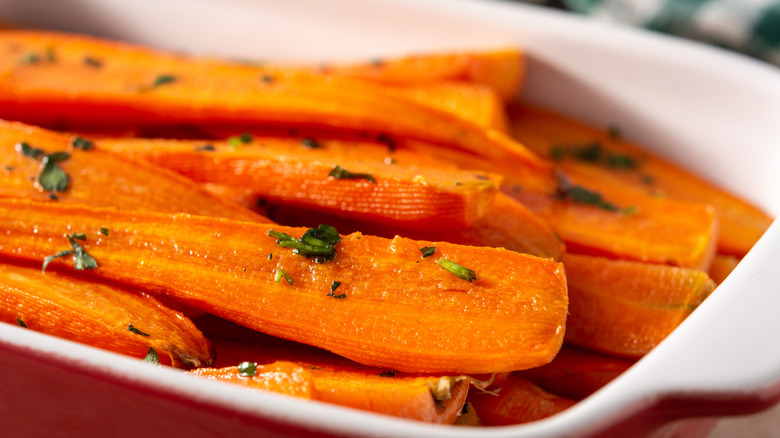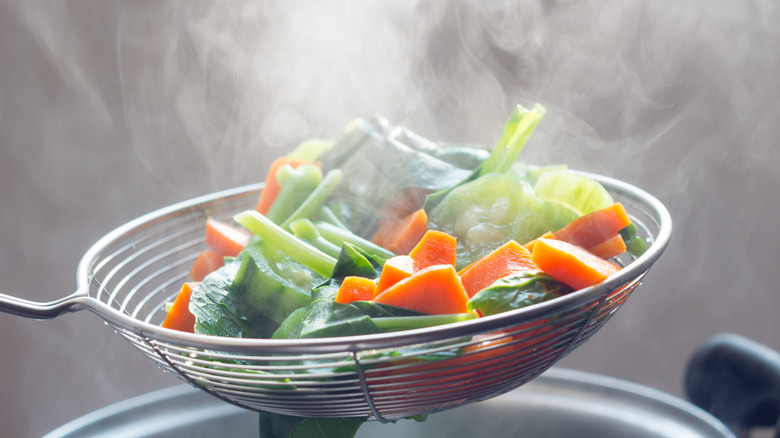The Likely Reason You Ruined Your Glazed Vegetables
At many dinner parties, you'll find among the meats, potatoes, and gravies, a plate of glazed vegetables. The most popular rendition of this dish will be some form of glazed carrot or parsnip, perhaps due to their close resemblance to other starchy tubers like potatoes. After all, there is something quite charming, and subtly sweet, about multicolored carrots slowly cooked to a reduction. Glazing amplifies the natural sweetness of the vegetable, while also giving it a caramelized sheen. Food Network defines glazing as the process of reducing a liquid until it thinly coats your vegetables in a sauce, usually giving it a sweet, buttery flavor.
Although it sounds simple, there are a few challenges you'll run into when glazing the vegetable of your choosing. The first thing to consider is your selected vegetable: Vegetables with more water content, such as asparagus, cook much quicker than starchy vegetables like carrots (via Betty Crocker). There's also the concern of being able to perfectly cook your vegetable while ensuring that your sauce finishes at the right consistency — not too runny and not burnt. But the biggest mistake in glazing vegetables is something you can easily avoid, once you know the rules of vegetable cooking.
Amount of water
The appeal of glazed vegetables is that they sit somewhere between a roasted vegetable and a steamed vegetable. Roasted vegetables tend to have caramelized bits due to the high heat of the oven, while glazed vegetables cook in a sauce made of sugar or juice, per Epicurious. A common rookie mistake is to add a lot of water or liquid sauce when you start cooking your vegetables. More often than not, people are overly generous with the water or juice they use to cook their vegetables, which can give them a watery and mushy finish.
Glazed vegetables are good insofar as they maintain the bite of the vegetable, all the while giving off the carmelized flavors of something well-roasted. The Culinary Pro shows that the process is almost like steaming; you start off with very little liquid, and cook the vegetables covered. Another related mistake is to cook different vegetables at the same time. Some vegetables have more water content and cook much faster, while others require more liquid and time. Combining different types of vegetables can leave you with a mixture of overcooked and undercooked vegetables. The next time you try this classic French technique, start off with less liquid, and add more as you go.

